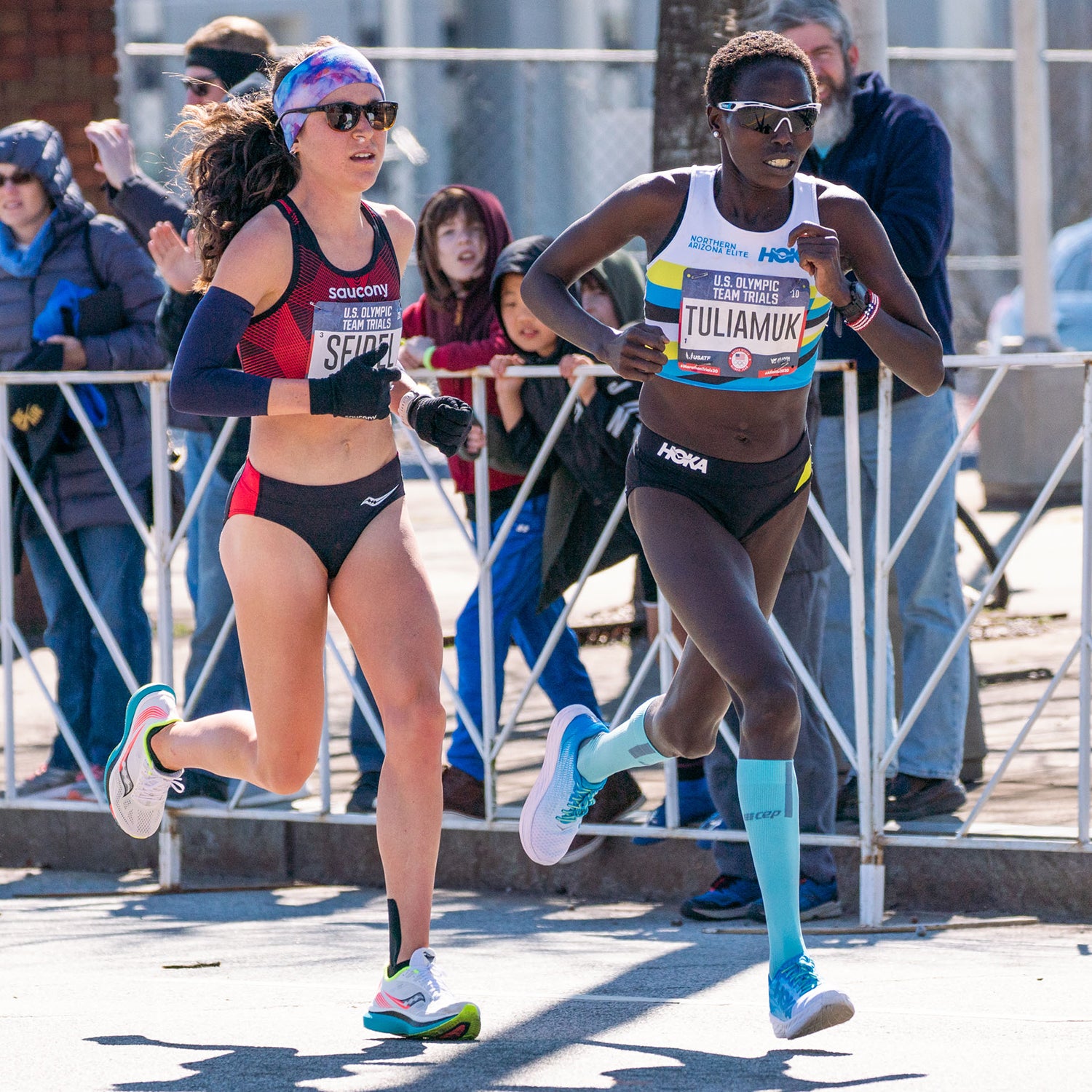A few weeks before the in the marathon, which took place on Saturday in Atlanta, I received an email from a prominent running journalist who was conducting a pre-Trials poll. The email was addressed “Dear Marathon Expert,” and requested my picks for the top finishers in the men’s and women’s race, where the first three make it onto the Olympic team. Here was a chance to announce myself as the Nate Silver of obscure sporting events. Alas, I was not able to capitalize. In the end, I managed to correctly predict only one out of the six runners who made it onto the podium. So much for experts.��
“That’s the beauty of a race like this, you never really know what’s going to happen,” Galen Rupp, the men’s champion, said during the post-race press conference. There’s some irony in that fact that Rupp was the person pointing this out, since his triumph was perhaps that only thing on the day that we knew was probably going to happen. (Guess who my one successful pick was.)��
It’s safe to say that few would have tapped , who was seeded 10th, to carry the day in the women’s race, running 2:27:23 on a course with over 1,300 feet of elevation gain, with winds gusting at over 20 miles per hour. Or that , who is still in the market for an official shoe sponsor, would come from behind to finish second among the men—narrowly outkicking Abdi Abdirahman, who is 43 years old and now the oldest person to make a U.S. Olympic team in the marathon. , the third-place woman, already has an Olympic silver medal, which she won in the 10,000-meters while representing Kenya at the 2012 Games—she became a U.S. citizen in 2017, after living in the country for 12 years—but was a long shot for a podium finish in Atlanta. Not as much of a long shot, however, as (seed place: 139) who finished second in her debut marathon (she only qualified for the Trials in December, by running the standard for the half marathon), in a race that featured the deepest women’s field in Trials history.��
“I definitely did not expect to be up here,” Seidel, who at a Boston coffee shop, said afterwards at a press conference for the medalists.��
There were others who certainly did expect to be up there, but for whom the day didn’t go as planned. The limited number of team sports meant that there was always going to be heartbreak for several of the pre-race favorites, but few would have expected so many big names to be a non-factor. Molly Huddle, Sara Hall, and Emily Sisson all ended up dropping out. Jared Ward, Scott Fauble, and Jordan Hasay finished, but were already out of it by the time the real racing began. When the dust settled, five out of six podium spots went to underdogs.
Given the recent banishment of his longtime coach Alberto Salazar for doping violations, Rupp was probably not the most popular runner on the course that day. (After skipping the pre-race press conference, Rupp also was the only not to attend the start of the Atlanta Track Club’s race for the general public, which took place the next day. Make of that what you will.)
But he was the best. After throwing in a few initial surges to break apart the lead pack, at around the 20-mile mark Rupp put a decisive gap between himself and what remained of his competition before soloing his way to victory in 2:09:20. Early on during that final surge, he would glance back a few times as if incredulous that it could really be so easy. Apparently, it was not. Rupp would claim afterwards that he was hurting at this stage and repeating the Rosary to himself to maintain focus. To an outside observer, however, it looked like he was doing a glorified tempo run down Peachtree Street. Not even Rupp’s ludicrously bulky Alphafly running shoes—which were well-represented in the Trials thanks to a to offer them, for free, to all competitors in the race—could detract from the aesthetic grace of his paragon stride. After he crossed the line, Rupp stood on his lonesome to see who would be joining him on Team USA. He had to wait 42 seconds to find out.
Things played out very differently in the closing stages of the women’s race, in which Tuliamuk and Seidel worked together over the final six miles and finished within seven seconds of each other.
“I told Molly, let’s do this,” Tuliamuk said afterwards. “I knew that we had six miles left and the last four miles of this course are really hard. I thought if we work together, we are actually going to accomplish the mission for the day which is to make the team,” she added. For her part, Seidel said that, after her and Tuliamuk broke away after 20 miles, “if we went down, we were going down together.”����
It’s hard to think of a more stark contrast between how the two races were won—or a scenario that better reflects a prevailing narrative in U.S. women’s distance running, which says that teammates and rivals are helping each other get better as part of a��. As three-time Olympian and newly minted coach of the Bowerman Track Club, Shalane Flanagan put it in a : “If you’re lonely at the top, you did it wrong.”��
But tell that to Rupp, who, divisive as he may be, is currently peerless among American marathoners. While it would probably be misleading to state that Rupp is somehow “lonely”—surely the guy has a vast support network—one doesn’t get the feeling that he has an abundance of friends among his competitors. On that note, get a load of this photo from the start of the men’s race:
A few hours after the Trials, I ran into Ben Rosario, who coaches the Northern Arizona Elite, Tuliamuk’s training group. I asked him what it felt like, for a coach, to have one athlete who had just experienced the biggest triumph of her career, while at the same time, there were other NAZ runners like Stephanie Bruce (6th), Kellyn Taylor (8th), and Scott Fauble (12th), who were crushed not to have made the team.��
“There’s nothing you can say. They’re sad. We worked really hard for this and multiple people really had a shot,” Rosario said. “But what we preached the entire way was that we were going to make it, because somebody is going to make it. And somebody did. Our philosophy was that if one of us makes it, we all do. So, I hope that that eases the pain of not making the team themselves.”��
For a professional runner, it’s impossible to overstate the stakes of a race that only comes around every four years and offers participants a shot at earning the right to call themselves an Olympian for the rest of their lives. With so much on the line, the notion that one can vicariously enjoy a teammate’s success sounds a little fanciful. �� ����
And yet, when I checked Fauble’s Instagram account to see if he had made any kind of public statement, the only thing that he posted was , embracing after another race. “Queen Ali MF’n T!!!!!!,” the caption read. Perhaps vicarious success is possible after all.��


